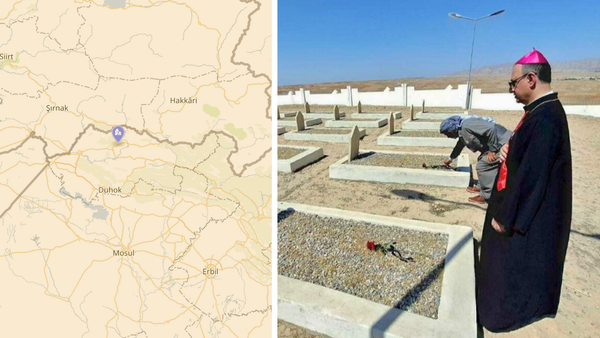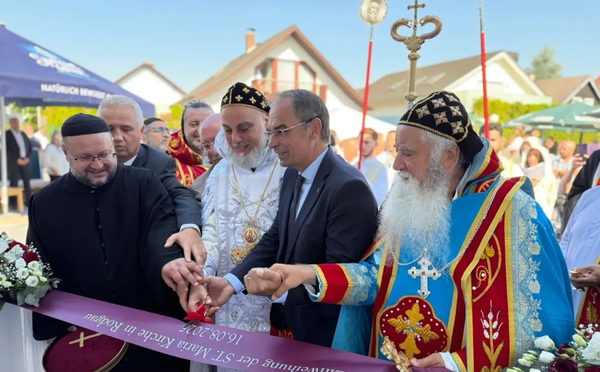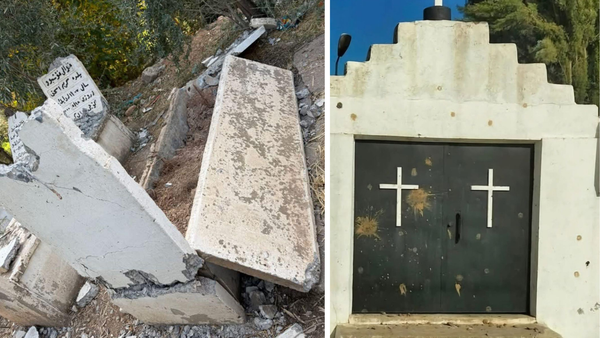A look at traditional Assyrian clothing and the struggle to keep it alive
Assyrian traditional costumes have survived centuries of upheaval, but their story remains largely untold – a gap Andrew Rassam is determined to fill.
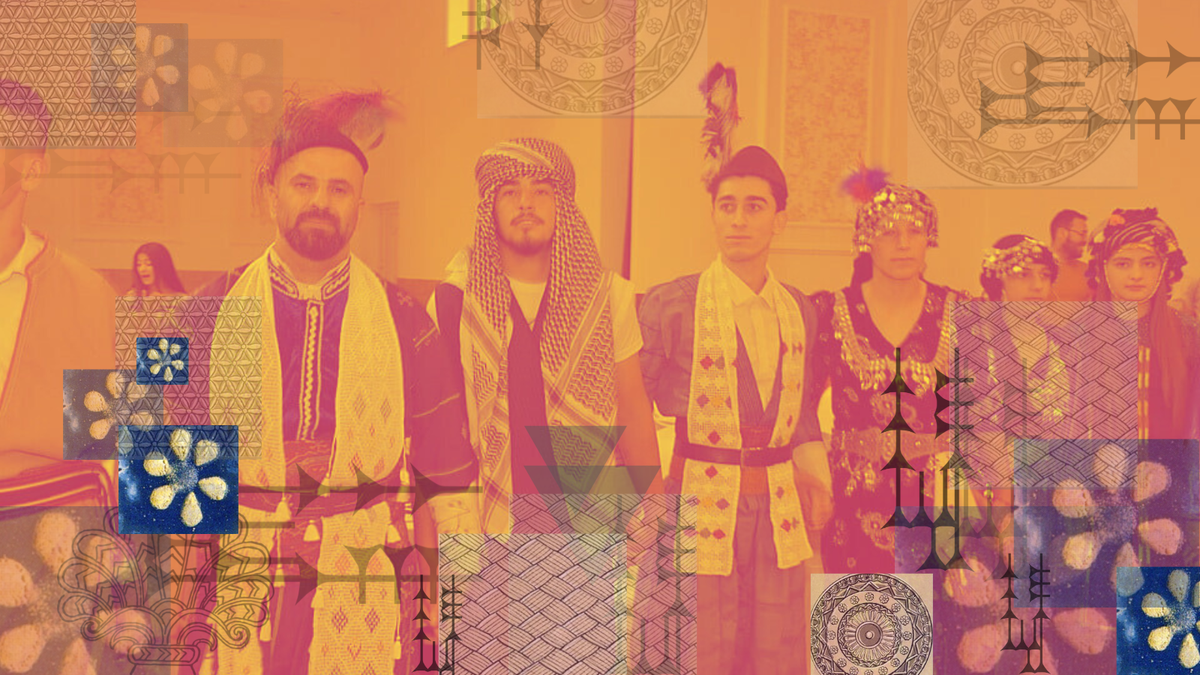
By Andrew Rassam
In a previous article I wrote for the Post, I mentioned a project that I had as part of my non-profit (Suraye Educational Collective). This project was called the Cultural Document, but having not progressed with it in over a year, I decided to retire it and move on with other Assyrian-related work. Yet the document contained a wealth of knowledge and information that hadn’t been previously reported, none of which could afford to be lost. And so, I set out to place the information elsewhere wherever I could.
"Compared to other groups in West Asia, our traditional clothing doesn’t really receive a lot of research or documentation"
In my previous article, I discussed some of the wedding traditions that are practiced by our people today. With the help of my friend Ramcina Gabriel (who made videos discussing these traditions on Instagram), I was able to write down a plethora of information about our traditions that previously never received online documentation, a trend which should hopefully be on the rise soon. While I copied down her notes, though, she helped me with the document by writing down information about our traditional clothing.
Unfortunately, compared to other groups in West Asia, our traditional clothing doesn’t really receive a lot of research or documentation. Or maybe, one hasn’t yet sought it out to compile everything into one place. Even so, information on our clothing traditions is scarce and hard to come by besides a website or two.
This article will mostly be a copy-paste of the information that Ramcina wrote on my prior document. However, there’s also new information included that hasn’t previously been reported in any online source. Ultimately, the takeaway here is that our clothing is not only rooted in our ancient heritage, but also our resilience as a people in maintaining our modern culture.
What are traditional Assyrian costumes?
Assyrian traditional clothing is known as Khomala (Julet Khomala) and has been crafted in Assyrian villages across generations of people. The term "Khomala" means "decoration", or literally "adornment", referencing that these were clothes that were not everyday wear, but instead worn for festive occasions. Surely enough, in recent years, Khomala is worn primarily for celebratory events, like the Assyrian New Year festival, weddings and other festivities.
The term “Khomala” isn’t universal across the Assyrian nation. Assyrians from the Nineveh Plains (Deshta d'Ninawe), the majority being members of the Chaldean Catholic Church, will call their clothing “Julet Matha”, meaning “Village clothing”, which have entirely distinct styles that some stereotype as more reminiscent of Arab clothing yet fall under the Khomala umbrella. Typically, Deshta (Plain) Assyrians will refer to the clothing by way of the village where it's worn (Juleh d'Alqosh, Juleh d'Tesqopa, etc.). Meanwhile, Assyrians from Tur Abdin call their attire “Jule ‘Edonoye” (festive clothes). Every district where Assyrians live across the homeland had their own local style of dress, including their own festive clothes.
The Khomala discussed in this article is unique to Assyrians of the Hakkari region, as it’s essentially become the “standard” form of Assyrian clothing seen today. Though other tribes in the Hakkari region had their own sets of clothing, these styles have not been able to be maintained into the modern day.
The most recognizable form of Julet Khomala originated within the Tyari tribe of Hakkari, even with the dark gray cap being commonly known as the “Tyari cap” (which includes feathers representing their warrior-like spirit). Khomala garments were the traditional attire of the Hakkari region, with each tribe featuring unique variations to distinguish themselves. While not all tribal clothing has been thoroughly documented, notable differences existed among them. For instance, Tkhomnaiyeh predominantly adorned themselves in white Khomala attire. The Tyariayie Layieh tribe (upper Tyari) typically omitted scarves from their clothing, whereas the Tyariayie Khtayie tribe (lower Tyari) commonly wore long scarves around their necks, more frequently observed with men.
Khomala attire, embellished with intricate embroidered patterns, served as a canvas for expressing the unique identity of each tribe. These patterns, meticulously crafted by the women of the tribe, bore significance and symbolism, though much of their original meanings have been obscured by the tragic events of genocides, massacres, and displacement. Namely, Khomala making changed drastically after the Assyrian genocide, with the Assyrians of Hakkari having been uprooted from their native lands. Even Assyrians from Tur Abdin stopped wearing traditional clothing after the genocide, out of fears of persecution. Nevertheless, common motifs such as crosses, the tree of life, zigzags symbolizing the rugged mountains of Hakkari, and various floral designs were prevalent. These traditional patterns could be seen on wool socks as well. These embroidered embellishments not only added beauty to the garments but also served as cultural markers, reflecting the rich heritage and traditions of the Hakkari region.
"Some accounts even suggest that women deliberately adorned themselves with numerous silver accessories to attract attention"
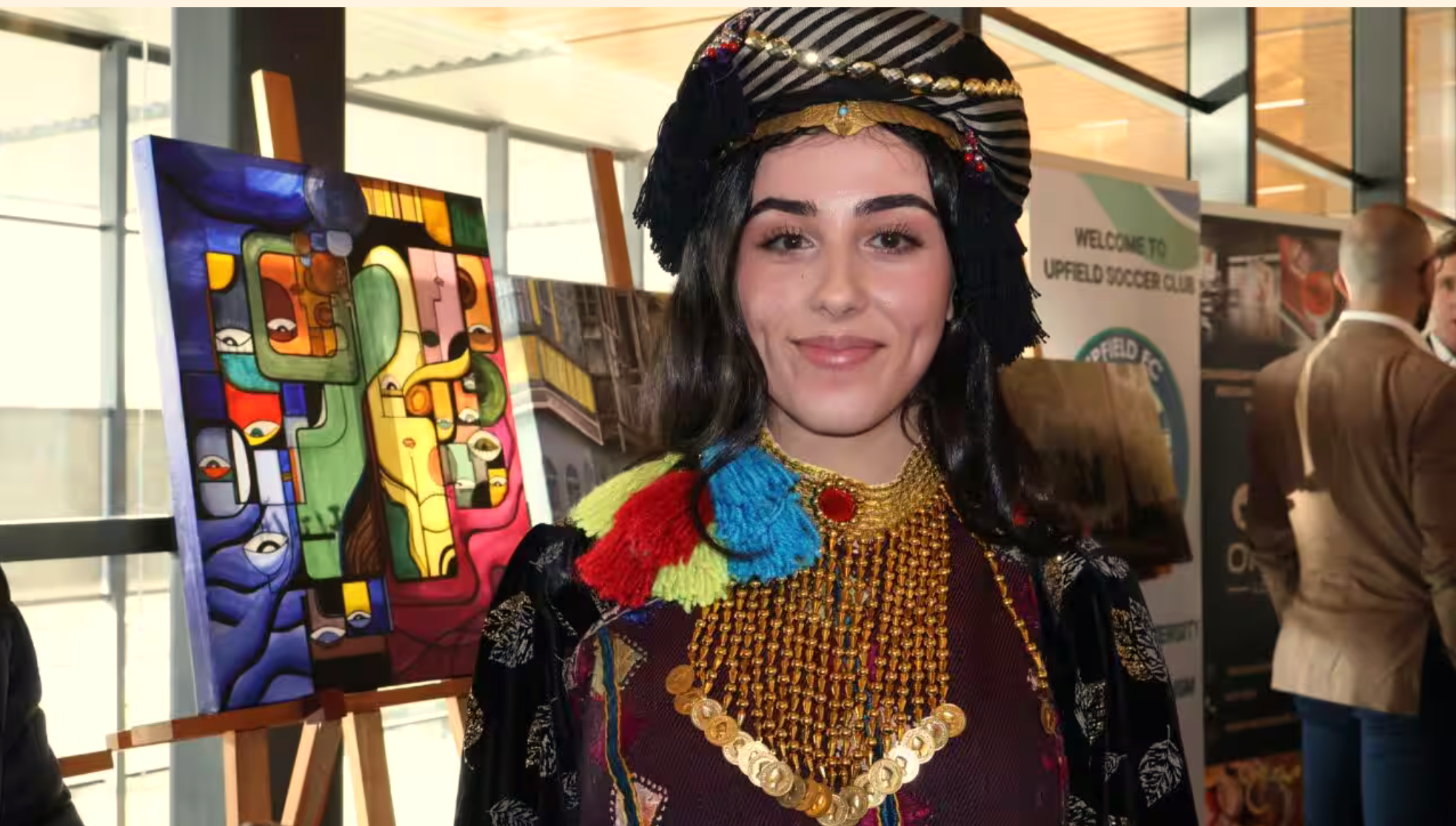
For Assyrian women, Khomala is a dress made of velour, decorated with silver adornments. They wear silver decorated headdresses called “Poshyia”, silver around their breasts called “Sanjak” (representing the wearer’s readiness for ceremonial duties), and silver waist bands called the “Hayyasa” or "Kamara". The craftsmanship of these components descend from the weaving and metalwork skills of various villages in the Hakkari region. Some suggest that the abundance of silver signaled the wealth of their families. Some accounts even suggest that women deliberately adorned themselves with numerous silver accessories to attract attention, as the jingling noise created by these adornments while walking was believed to captivate men's interest. Women and men also wore “Charwkhe” (the walkers), a type of shoe wrapped around the foot made of leather/wool.
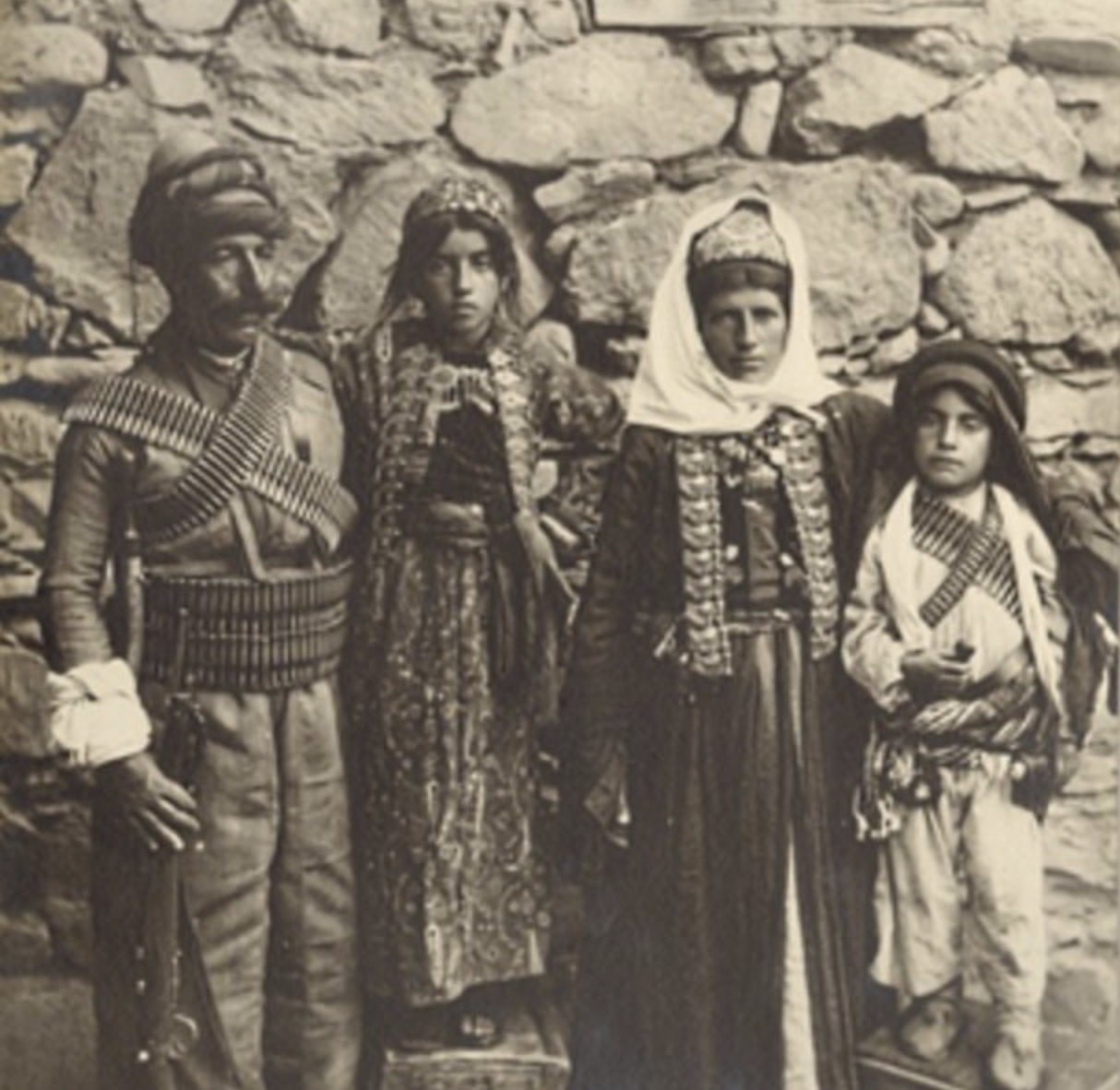
The threats against the traditional dresses
Unfortunately, as most Assyrians now live in the diaspora, the threat of assimilation shows us that many of our traditions and defining cultural traditions aren’t being passed down. The same holds true for knowledge of making Khomala. It's the older generations who make most Khomala in the diaspora and Assyria, where it’s also considerably expensive to obtain. Documentation on the clothing and its patterns is also sparse, adding to the many difficulties Assyrians have in preserving their culture. Khomala is also under threat by Kurdification; this was highlighted in 2024, when a museum in Zakho branded Khomala as Kurdish clothing, to the dismay of many Assyrians worldwide. Such incidents highlight the challenges that Assyrians currently face in preserving their culture.
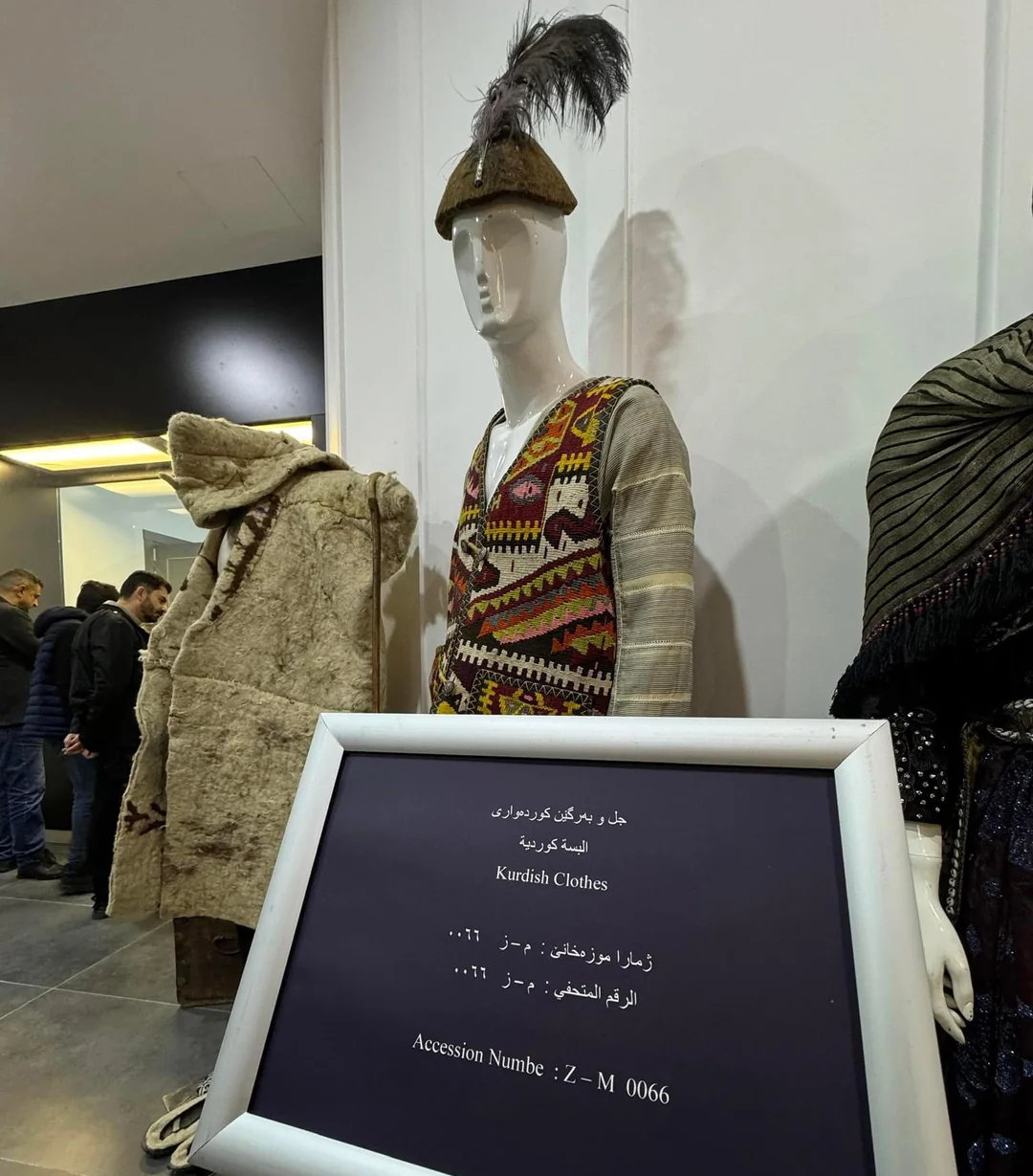
It is on Assyrians worldwide, therefore, to preserve their clothing traditions by actively wearing and buying it. If traditions are to survive, they must be taught and passed down. Academic research must also be conducted on a greater scale to document our clothing, its patterns, variants, and diversity. Thankfully, attempts by the diaspora to document the history and making of Khomala show exciting and very promising steps to preserving it’s traditional roots for future generations to come, and hopefully, greater steps will follow suit.
The author would like to thank Ramcina Gabriel for making this article possible.


